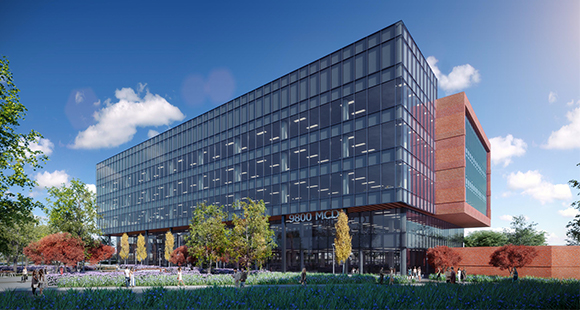Revenir en arrière
L3 Technologies
Services Fournis
Client Objectives
Global aerospace and defense systems manufacturer, L3 Technologies, Inc. (L3T), maintains an expansive and intricate real estate portfolio. In 2016, L3T selected Cresa to support its international real estate portfolio with the delivery of strategic, integrated occupier-only services.
L3T’s Communications Systems West division occupied several buildings in Salt Lake City’s Airport Technology Park (ATP), totaling approximately 1,000,000 rentable square feet owned by Drawbridge Realty and housing nearly 3,700 employees – the highest concentration of their global workforce. Most of the buildings were antiquated and all carried staggered lease renewal dates, causing concern over the long-term real estate plan for the firm serving as one of Salt Lake City’s top-five private sector employers.
Out of Cresa’s Washington, DC office, Tom Birnbach, Aaron Berkey and Lauren Berkey partnered with Salt Lake City’s Paul Skene to assess where improvements could be made. Their goal was to focus on a real estate solution that delivered L3T:
- favorable lease terms with regard to future lease extensions and expansions
- the alignment of staggered lease expirations with other flexible-option dates
- relief from the exorbitant capital improvements required to remain in-place
- significant structural improvements
- a new build-to-suit facility for their growing employee base
Cresa presented lease renewal options based on fair-market costs to Drawbridge for L3T’s largest building totaling 275,125 square feet. Drawbridge rejected the proposal, prompting the consideration of relocating L3T’s Salt Lake City operation out of ATP and into a new, ground-up, build-to-suit campus. This would significantly upgrade L3T’s facilities, while driving operational savings resulting from a
consolidated campus setting.
Cresa located developable land in close proximity of ATP that could accommodate the space needs. For over a year, Cresa and L3T worked with the land owner and an architecture firm to design plans, budget costs and contract vendors for a 900,000-square-foot, multi-phased campus consolidation. The intention was to consolidate L3T’s scattered Salt Lake City employees over the course of seven years as each individual building’s lease expired.
Considering the impending rise of commercial interest rates and the impact that those rates would have on rental rates, Cresa conducted critical analyses to compare the long-term impact of the new campus’s unfixed interest rates against Drawbridge’s fixed rental rates. Results determined that it was, in fact, in L3T’s best interests to consider remaining in-place. Simultaneously, Drawbridge began to aggressively negotiate terms to keep L3T in ATP to avoid the financial implications of losing their most significant tenant.
Results
Two years after Cresa’s consultants were brought on board, and with the assistance of their lease audit and lease forensics teams, leases were successfully executed in August 2018 totaling approximately 875,000 rentable square feet. L3T will remain in ATP, newly named L3T Tech Park, with three existing buildings receiving significant upgrades and aggressive terms negotiated on L3T’s behalf. A new build-to-suit totaling 379,400 rentable square feet and slated for delivery in 2020 will feature a three-story building including manufacturing labs, a machine shop, conference and office space.
Crafting a strategy that significantly benefited L3T’s Salt Lake City operation required patience, ingenuity and collaboration. The renovations and ground-up development were critical in effecting Communications Systems West’s long-term business strategy to remain ahead of Salt Lake City’s competitive job market and historically low unemployment rate, allowing them to attract and retain world-class talent.
In the end, this successful operation:
- provided L3T with significant cost savings, though maximizing efficiencies, reduced rental rates, cash contributions and lowered escalations as compared to their existing obligations;
- created notable gains in their overall space utilization efficiency and improvements to their manufacturing process;
- eliminated their obligation for capital expenditures associated with building maintenance and overall operating expenses;
- introduced long-term growth options; and
- and brought significant upgrades and improvements to the interior and exterior building common areas and grounds, allowing L3T to create a collective “campus feel” for their workforce.


